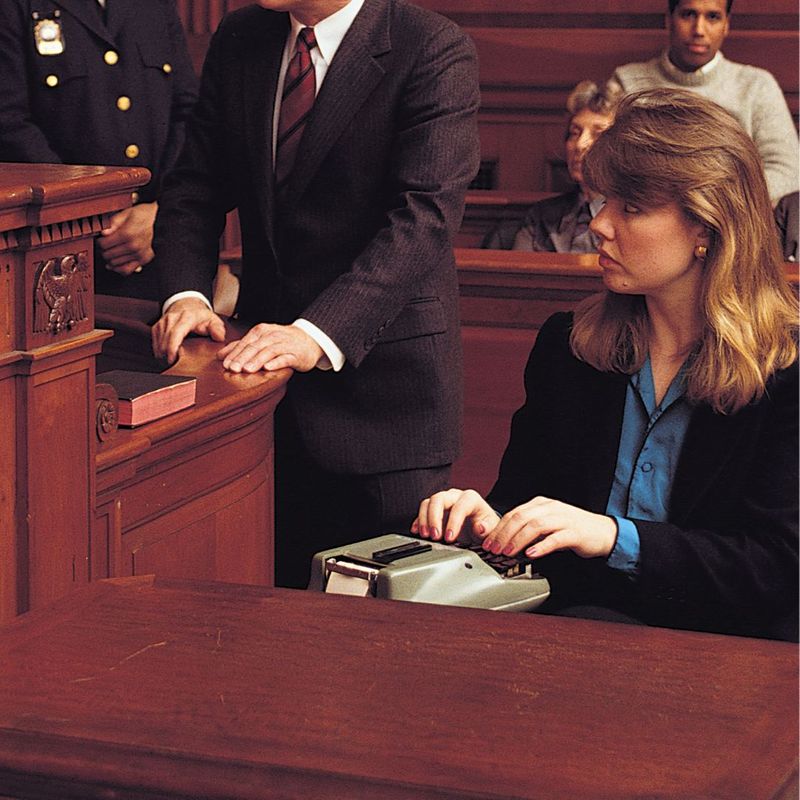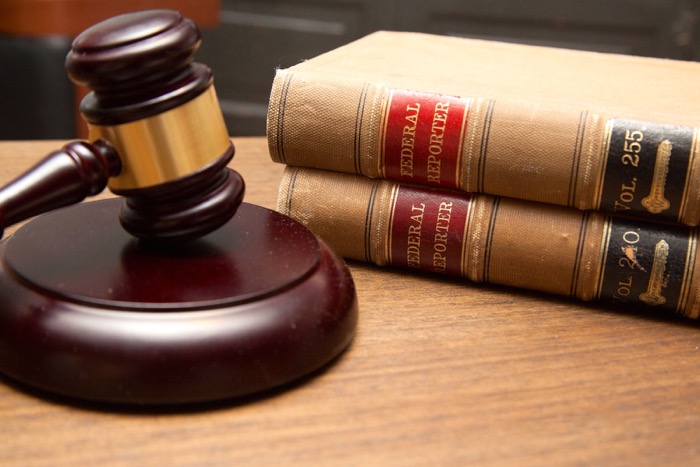Durham court reporting and real-time transcription: benefits explained
Wiki Article
How Court Reporting Works: A Step-by-Step Guide to the Lawful Process
Court reporting is a vital element of the legal system. It includes an organized process that assures precise paperwork of proceedings. From preparation to the final distribution of records, each action is crucial. Comprehending just how stenotype reporter run deals understanding right into the honesty of legal records. The subtleties of their work can profoundly impact legal end results, prompting inquiries regarding the methods and technologies they employ. What are the specific techniques that define this career?The Role of Court Reporters in the Legal System
Stenotype reporter play an important role in the lawful system by providing dependable and accurate transcripts of court process. Their work guarantees that every talked word during tests, depositions, and hearings is documented, which is crucial for keeping an official document of events. This transcription is fundamental for charms, as it enables higher courts to examine the process and determine if any mistakes were made during the trial.In addition, stenotype reporter assist in protecting the integrity of the legal process by developing verbatim documents that can be referred to by legal representatives, judges, and various other events included in an instance. They commonly make use of specialized equipment and software program to record discussion with precision. Past the court room, their records can act as vital historical documents, using insight right into judicial procedures and the legal system's performance. Inevitably, stenotype reporter contribute greatly to openness and responsibility in legal matters.
Getting ready for a Court Reporting Session
Prep work is crucial for a successful court reporting session, as it guarantees the accuracy and performance of the transcription process. Court press reporters start by reviewing situation materials, consisting of pleadings and witness lists, to familiarize themselves with the terminology and context. They additionally make sure that they have the required devices, such as steno machines, notebooks, and back-up gadgets, ready for use.Prior to the session, communication with lawful teams is crucial. Reporters typically clear up any specific demands relating to formatting or liked terms. Furthermore, they may organize to meet lawyers or witnesses to talk about the process and validate the routine. Getting here very early to establish up the tools permits fixing possible technological issues. On the whole, thorough preparation not just enhances the press reporter's self-confidence however likewise adds considerably to generating a precise and clear record of the legal procedures.

Recording the Document: Techniques and Tools
Making use of innovative methods and trustworthy equipment, court press reporters carefully capture the talked word throughout legal procedures. They employ stenography, a method including a specialized equipment that allows them to type several noises concurrently, consequently transcribing discussion in real time. This maker, recognized as a steno key-board, is outfitted with secrets that represent syllables and words, making it possible for swift and accurate input.
Along with stenography, court press reporters might utilize audio recording tools as supplementary devices. These devices act as backups, making sure that no important details is lost during process. In addition, some reporters include software application that boosts their transcription efficiency, offering functions such as voice acknowledgment and automated formatting.
Proper positioning and focus are paramount; reporters need to maintain interest on all speakers, recording nuances and inflections that add to the record. With a mix of ability and technology, stenotype reporter promote the honesty of the legal procedure by making sure a complete and specific record of occasions.
Recording the Proceedings
Transcribing the proceedings needs court reporters to transform spoken discussion right into created message with remarkable accuracy and speed. This procedure typically occurs immediately after the recording has been caught, using specialized software application that permits seamless transcription. Stenotype reporter have to listen diligently to the sound, making certain that every inflection, pause, and word is precisely represented in the records.They usually count on shorthand systems, individual transcription skills, and advanced modern technology to promote this job. The setting in which they work can be hectic and sometimes disorderly, as legal procedures frequently entail multiple audio speakers and technological lingo. Court press reporters must likewise preserve focus to catch subtleties in tone and context that may be essential for the lawful record. Eventually, the precision of the transcription is crucial, as it functions as an official record for future reference in lawful proceedings.
Assessing and Editing the Transcript
The procedure of evaluating and editing the transcript is vital for guaranteeing accuracy in court reporting. Court reporters commonly collaborate with attorneys to clear up any kind of obscurities and validate the accuracy of the taped declarations. This partnership is crucial for keeping the integrity of the lawful record.Significance of Accuracy
Accuracy acts as the keystone of reliable court reporting, as also small mistakes can greatly change the definition of legal proceedings. The evaluating and modifying procedure is important in ensuring that transcripts mirror the talked word with integrity. Court reporters meticulously confirm names, technical terms, and legal jargon to keep precision. This interest to information assists stop misconceptions that could impact case outcomes. Accuracy cultivates trust amongst legal specialists, customers, and the court, reinforcing the stability of the judicial system. Mistakes can cause disagreements or charms, making it imperative for press view publisher site reporters to refine their job extensively. Inevitably, the search of precision not just boosts the reliability of the records but likewise promotes the requirements of the lawful career.Partnership With Lawyers
Collaboration in between court reporters and lawyers is essential throughout the examining and editing and enhancing phase of transcript production. This process guarantees that the final file precisely shows the talked word and adheres to lawful standards. Attorneys often examine records for particular terms, context, and any potential mistakes that might influence the situation. Stenotype reporter depend on attorneys' proficiency to make clear ambiguous sections or highlight vital statements. Reliable communication is crucial; lawyers may offer responses or demand corrections, which stenotype reporter have to address promptly. This collaboration not just improves the quality of the transcript but also adds to a smoother lawful procedure. Inevitably, collaborative initiatives cause a specific and dependable record, necessary for future recommendations and lawful procedures.Delivering the Final Transcript to Customers
Upon conclusion of the transcription process, stenotype reporter thoroughly prepare the last file for original site delivery to their clients. This final transcript undergoes detailed checking to assure accuracy, as any mistakes could substantially influence lawful process. Stenotype reporter layout the file according to the details needs stated by the clients or legal companies, including pagination, indexing, and any necessary displays.
Ultimately, court reporters may offer a cover letter summarizing essential information and offering further aid if needed. This thorough strategy assurances that customers get a polished, specific, and conveniently accessible transcript, vital for their legal needs.
Often Asked Questions
What Qualifications Are Required to Come To Be a Court Reporter?
To become a court press reporter, people typically need a secondary school diploma, conclusion of a court reporting program, and qualification or licensure, depending upon state requirements. durham court reporting. Effectiveness in shorthand and modern technology is also necessary for successFor how long Does It Require To Full Court Reporting Training?
Normally, completing court reporting training takes between 18 months to four years, depending upon the program's intensity, the pupil's pace, and the certain demands of the territory in which they desire to exercise.
What Is the Average Income of a Stenotype Reporter?
The typical salary of a stenotype reporter varies by location and experience, typically ranging from $45,000 to $100,000 each year (durham court reporting). Elements such as specialization and need can greatly influence their profits in various areasAre Court Reporters Required to Have Qualification?
Court press reporters are usually required to get accreditation, which assures they have the necessary abilities and expertise for exact transcription. Certification requirements can differ by state or territory, mirroring specialist requirements within the legal neighborhood.Can Court Reporters Job From Another Location or Freelance?
Court press reporters can work remotely or freelance, giving adaptability in their profession. Several utilize technology to record procedures from different areas, permitting varied opportunities in the lawful area while maintaining a work-life equilibrium.Court press reporters play a his response necessary function in the legal system by giving precise and reliable records of court proceedings. Furthermore, court reporters aid in preserving the stability of the legal procedure by producing verbatim records that can be referred to by attorneys, courts, and other celebrations included in an instance. Utilizing advanced methods and dependable tools, court reporters meticulously capture the talked word during lawful process. Court press reporters need to likewise keep concentration to catch subtleties in tone and context that might be essential for the legal record. To end up being a court reporter, people normally need a high school diploma, conclusion of a court reporting program, and certification or licensure, depending on state requirements.
Report this wiki page